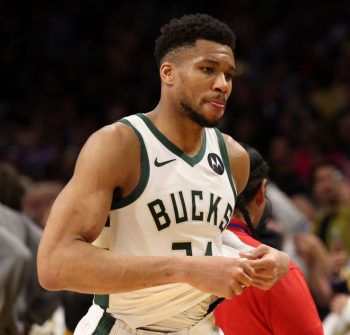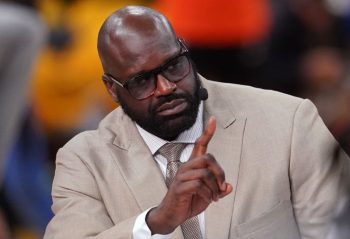NBA
NBA Daily: Devonte’ Graham — Breakout or Mirage?

Based on the first two weeks of the regular season, the Charlotte Hornets seem to have found their franchise point guard.
It’s a reality that’s come as a major surprise to most fans and analysts, who deemed the three-year, $57 million contract Charlotte awarded to Terry Rozier as among the summer’s very worst. More shocking, though, is that it’s not Rozier who’s staked his claim as the Hornets’ undisputed floor general in the season’s early going.
To be fair, even the die-hards whose eyes were opened by Devonte’ Graham at Summer League didn’t see this coming. He’s been Charlotte’s most influential player, and it’s not particularly close. The Hornets outscore opponents by 15.8 points per 100 possessions with Graham on the court compared to the bench, per NBA.com/stats, best among regulars. While his per-game averages of 17.0 points and 7.0 assists are hardly spectacular, they’re also a team-high in both categories.
It’s not like Graham, who’s come off the bench in Charlotte’s eight games, has done a sizable majority of his work against reserves, either. He’s fourth on Charlotte in total minutes, and is the only player head coach James Borrego has felt it necessary to have on the floor for each of his team’s 19 crunch time played this season.
Coming into 2019-20, believers saw enough in Graham to think he could be a valuable third guard, if the long-range shooting prowess he showed in Las Vegas wasn’t a flash in the pan, anyway. He launched a whopping 6.9 triples per game at Summer League, connecting at a 41.8 percent clip despite most of his tries coming off the bounce. Graham has been even better than that for the Hornets, putting the kind of imminent pressure on defenses with the ball that’s allowed other aspects of his game to shine.
Graham, obviously, won’t shoot 50 percent on pull-up threes all season. But even if he recedes to somewhere in the mid-to-upper thirties, he’ll nevertheless have staked his claim as one of the league’s most dangerous off-dribble shooters.
Graham has let it fly with such freedom and confidence early in the season that it’s tempting to believe that inevitable regression isn’t a foregone conclusion. He’s jacking 4.3 pull-up threes per game, 10th-most in basketball behind a who’s who of star shot-makers. Only Buddy Hield is currently shooting a higher percentage on those tries than Graham, and his film would seem to reveal a player more in line with that esteemed company than one due for a significant backslide.
Graham shoots an easy ball, and his quick, compact release allows him to frequently rise up for threes with only marginal contests by the defense. He loves to stop and pull-up in transition, and doesn’t hesitate to shoot when defenders give him even just a sliver of air space, whether coming around a high ball screen or isolated at the top of the floor.
Graham’s balance on step-backs and side-steps is also impressive and, coupled with his comfort from multiple feet behind the line, sparks optimism about his long-term prospects as a game-changing shooter.
But possessing that plus attribute alone would limit his ceiling to a glorified Quinn Cook – certainly a helpful player, but not the type of guy whose presence answers more questions than it poses. Graham, though, has leveraged his newfound threat as an off-dribble marksman into star-like effectiveness as an overall playmaker.
Graham, 24, played all four years at the University of Kansas, and it shows in the way he operates with the ball. He’s always probing for ways to manipulate the defense with ball fakes, look-aways and extra dribbles, nuance that, combined with defenders’ fear of his jumper, has made him a more effective penetrator than he would be otherwise.
He is merely an average quick-twitch athlete, but Graham compensates with rare body control and a keen understanding of how to protect the ball while finishing. His 71.4 percent shooting at the rim, accuracy normally reserved for the Giannis Antetokounmpo’s and dunk-centric bigs of the world, is another statistical outlier bound to drop as the season wears on, but indicates just how crafty Graham is around the basket.
Graham doesn’t need to be an elite or even above-average finisher for a guard. With defenders going over every screen he uses on or off the ball and tip-toeing at every hesitation dribble, he’ll continue creasing the paint with relative ease going forward, drawing attention that frees up his teammates for easy looks.
Other than the shooting, it’s as a table-setter where Graham has inspired most thus far. The same sense of control and pace he exhibits as a scorer is even more evident as a passer; Graham has routinely been a step ahead of the defense, creating angles that aren’t initially there for pocket passes and dump-offs in the paint. He’s even tossed a few pinpoint lobs from half court, too.
It bears repeating that Graham won’t shoot flames from distance the entire season. Defenses will treat him differently once that regression comes, prompting a ripple effect that’s likely to decrease his efficiency and make him less dynamic with the ball.
But, even if Graham settles into a 35 percent pull-up shooter from three, he’ll still be a surefire rotation player. Ball handlers who must be guarded beyond the arc and know how to create in the paint will always have a role in the league, especially those who double as solid defenders.
Graham’s innate knack for getting to the line raises his baseline, too. James Harden and Goran Dragic, foul-drawing maestros, are the only players also taking at least half of their shots from deep who have a higher free throw rate than Graham’s 39.8 percent, per Basketball Reference.
For now, Graham’s ceiling is unknown. Considering his marginal physical profile and the fact his current level of shot-making is unsustainable, it would seem as if Graham’s early-season play might be his peak. His 41.9 percent shooting on twos doesn’t exactly portend stardom, either.
But then you remember how much he’s improved since last season, and how with each game the action seems to be slowing down.
Only true basketball savants, after all, are capable of making plays like this at the NBA level.
Fortunately for the Hornets, they don’t need to decide how Graham fits into their utmost plans any time soon. His rookie contract runs through next season, sending him to restricted free agency in the summer of 2021.
And, until then, Charlotte should continue to stretch the limits of his game. As his recent play has made abundantly clear, putting a cap on Graham’s potential could prove missed opportunity the Hornets won’t get again.











